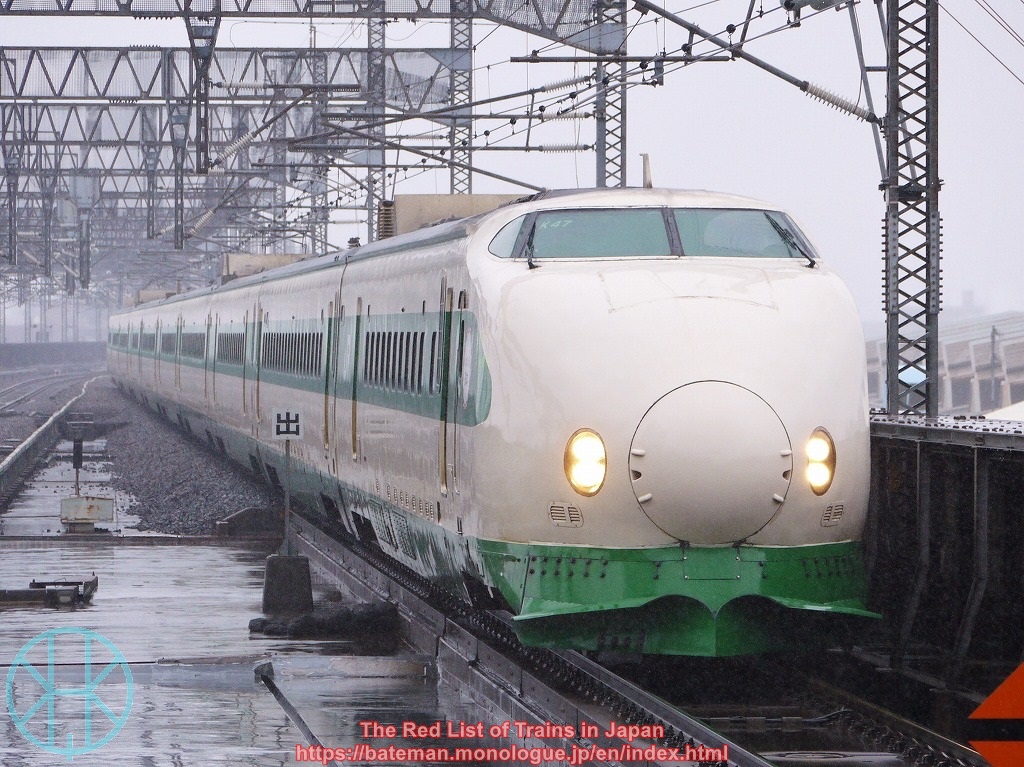200 series Bullet Train

Data (as of 12 Jun 2021)
| Status: | Extinct |
| Constructed in: | 1980-86, 91 |
| Number built: | 700 |
| Retired in: | 2013 |
History
The 200 series was developed by Japanese National Railways, and introduced to Joetsu and Tohoku Shinkansen when they were opened in 1982. Unlike bullet trains on Tokaido and Sanyo Shinkansen, those in the east were designed to deal with heavy snow in winter. The maximum speed was 210 km/h (131 mph) at first, but later raised to 240 km/h (150 mph). They formed 12 coaches with dining cars when introduced, but some of them became 16 coaches with double-decker carriages (dining car and first class).
The design was based on 0 series, the first high-speed train in the world, but those converted by JR East looked like 100 series, which was called "shark nose". Traction and other systems were completely different from the 0 series.
The 200 series were used across the bullet train network in the east. It is worth noting that during the 1998 Nagano Olympics, a 12-car unit was converted for Nagano Shinkansen, where electricity frequency is 60 Hz while 50 Hz on Joetsu and Tohoku Shinkansen. JR East also converted several units to be able to run at up to 275 km/h (170 mph), but they could run at such a speed only when descending steep gradients. In 1999-2002, the company refurbished some units while replacing most of them with E2 series.
Refurbished units remained on mainline longer than expected, but they were withdrawn in 2012-13 as E5 series was introduced.
Photos

The refurbished units were repainted, and used on Joetsu Shinkansen until the very end.

The "shark nose" units were mainly used on Super Yamabiko (Tokyo - Morioka, fast) services in the 1990s, but retired in 2005.
(Updated: 17 Jul 2021)
